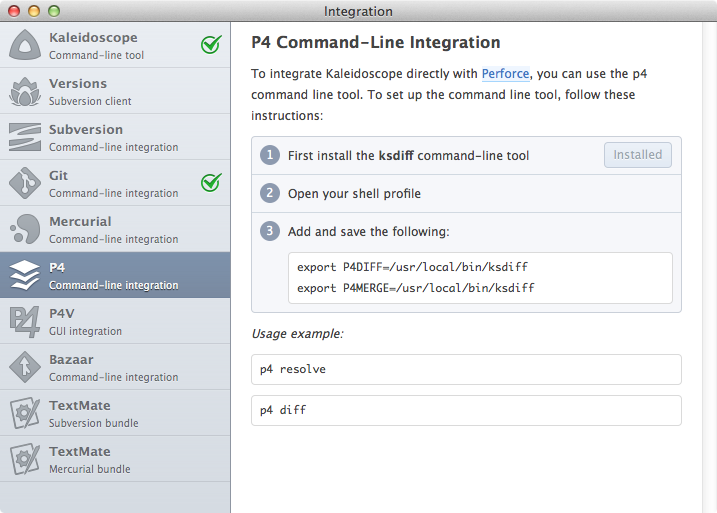Git Gui Tool For Mac

The applicatino asks you to register with my email address for further 'communications related to GitKraken or Axosoft'. There is no way to skip this step, you have to provide an email address ––and pay attention to 'OR'. No thanks, buddy. First thing I tried is dropping a git repo folder to the window, didn't work. When I click the open button I can see the Javascript animation glitching on my 'Early 2015 i5 2.7 Ghz MacBook Pro'. The commit list UI is kind of alright but it doesn't show you the diff anywhere. So that's not exactly a Git UI, buddy.
Unleash the Kraken! GitKraken comes with two legendary tools that help developers be more productive: the Git Client for Windows, Mac and Linux, and Glo Boards for task and issue tracking. GitAhead is the smarter Git GUI client for Windows, Mac and Linux. Our Git GUI client makes understanding code history simple. Download your smarter Git GUI client for free now. We create tools that are exciting to us because they help us, and all programmers, to visualize and understand code at a deeper level than ever before.
And this is not open source either, that's a lot of strikes. Gitup ( for those interested) looks amazing!
My team's been using which has been a godsend - many of the same features, including interactive diff staging and tree view, in a native-feeling Mac interface. But that gitup screencast, how it makes rebasing painless - that's like nothing I've seen before. I'll definitely give gitup a try.
Itool For Mac
In general, these types of interfaces are VERY useful for junior programmers who aren't used to thinking of Git as a digraph of commits. I'm surprised that they're not used more often in online courses and bootcamps. Ddj wego 2 update. Maybe not enough people know about them yet!
Because IMO struggling and learning 'the hard way' first forces people to understand what is actually happening at the git level before using fancy tools like this or Tower to e.g. Rebase master or otherwise do complicated unnecessary things because the tool makes them easy to do and 'it seemed like the right thing'. There are a lot of ways to do git. If you frequently find yourself needing a GUI tool to do more than compare diffs (there are a few good ones out there), it's very possible that the way you / your team are using git could itself use some work. If you're very new to git on teams or even if you're more intermediate, is probably worth a read to understand how this stuff can work nicely for projects.
It really shouldn't be rocket surgery to cut a new release:). I used to be a cli proponent and it worked very well for moderately sized, hardly dynamic repos; for other repos that can see dozens of commits an hour it's much easier to use a GUI.
I use it for easier rebasing and cherry-picking, because I can directly see what I'm taking and where I'm putting it, instead of having to first check the log, then copy the hash, then paste it with the right git incantation. Sometimes using the mouse really is more powerful; sometimes it is not. It is important to see that it can sometimes be your friend. The problem isn't the cost in money, it's the cost in time and inconvenience. It sort of manifests in two ways.
First, I build my professional workflow around a tool that can simply cease to exist in a few days/weeks/months/years.it puts me at the mercy of the maker of the tool, often needlessly. Second, software that costs money tends to be closed source, which is at odds with community efforts that can improve and shape the software over time, as well as maintain it should the original developer move on. So those issues are the problem, not the $70. SourceTree is a god awful nightmare of a UI and I have found myself having to triple check all the checkboxes present before I do anything lest I manage to hose it up. I would use absolutely no GUI if my option was that or SourceTree. I also hear the latest update has been a real punch to the gut for people as well. I branch and merge in moments at least a half dozen times a day in Tower.
Getting to diffs, creating patches, and viewing changesets are easy and pleasant to look at. It has built I support for a Gitflow workflow so naming conventions and everything allow for one or two clicks to go from no feature branch to a new one. Frankly, it's just pleasant to use, doesn't screw up my source, and makes it easy to get my code committed and pushed. > It has built I support for a Gitflow workflow So does SourceTree.
Have you tried using it? If so, what issues have you found with it? Personally, I don't use it, so I can't speak to its functionality. > I branch and merge in moments at least a half dozen times a day in Tower. I do the same in SourceTree, and find it trivial, but perhaps it's just a usage difference. If you want to use Tower go for it -- I have no affiliation with Atlassian to push the product on you, I just enjoy it.